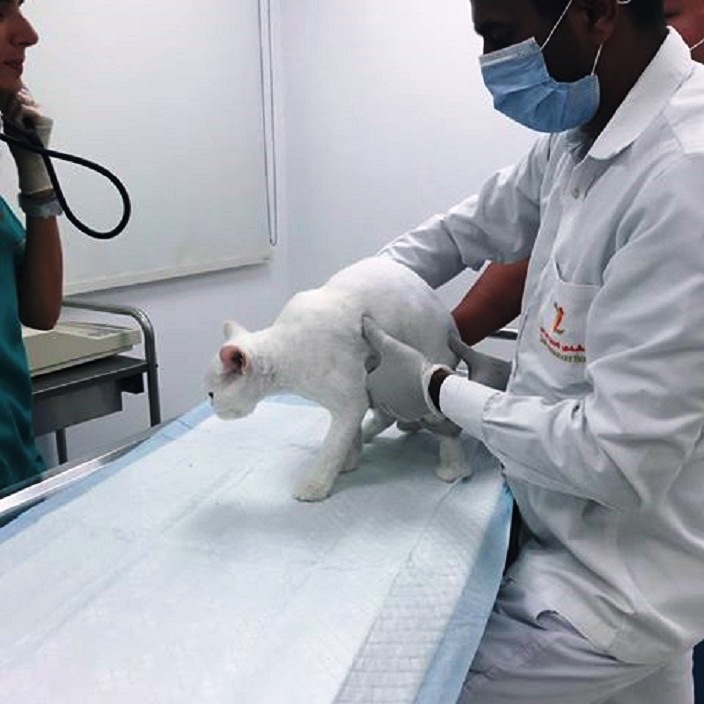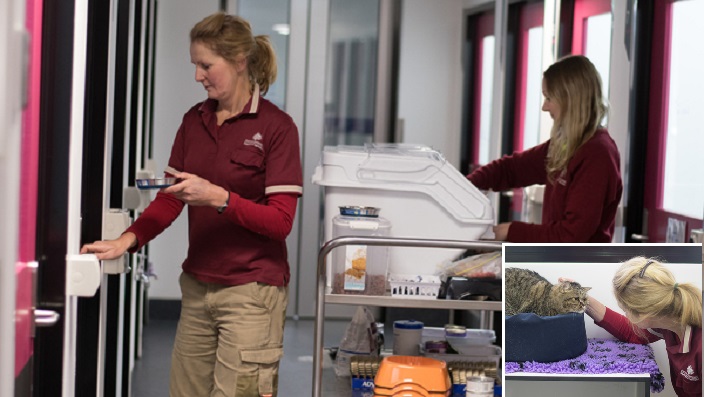Three years ago, Hira and her husband Omair made the decision to leave Pakistan in search of a better life in Australia.
They kicked off the process by preparing their migration papers and later applied for permanent residency.
It was during this period that they realised that Pakistan was a ‘non-approved’ country for the direct importation of animals to Australia.
This meant that their white long-haired tabby cat, Casper, was not eligible to join them down under.
“It was a big shock to us,” Hira recalls.
“We knew that Australia is an animal-loving country and life is better for animals there too. But it was a difficult moment for our family."
How can you leave a family member behind? Casper had been part of us for the last ten years; we simply can’t let him go.
Hira said that her husband bought Casper when he was a month old.
“We were not able to have a child for a long time, so my husband thought it will be good to have someone in the family,” said Hira, who is now a mother of two.
Australia’s policy of importing companion animals
Hira and her husband contacted the Australian Department of Agriculture who deal with the importation of pets.
The couple was told that in order to bring a companion pet from Pakistan to Australia, the owner had to get the pet checked, vaccinated and quarantined, a process that could take a minimum of eight months before the animal was cleared to enter.
Australia employs this policy to ensure that animals already in the country are not affected, according to James Wallner, the director in charge of the importation of companion animals at the Department of Agriculture.
“The main principle of import of pets is that they are coming from countries that have diseases that are not present in Australia and we need to make sure that we have addressed the risk of introduction of these diseases,” he said.
Mr Wallner agreed that the Australian policy relating to the importation of companion animals was “strict”.
“We are free of a number of diseases. As a result, our conditions are very conservative.
"We address that risk a number of ways including animals being eligible to come from certain countries and they must come after having spent a period in a foreign country that makes us certain that the animal does not have rabies."
Rabies would be a disaster for Australia, for humans, wildlife and people’s pets.
Image
Offshore preparation
As Hira and her husband were applying for permanent residency in Australia, they also began preparations for Casper too.
“Firstly, we had to get Casper vaccinated with approved vaccines that are quite difficult to find and then the tests had to be sent to an approved country,” she said.
“We were fortunate that all tests [done in South Africa] and vaccinations went well for him and there were no diseases.”
The next step was to keep Casper free of any illnesses for six months which again went fine for the family and they eventually received their Australian permanent residency.

Casper was vaccinated before coming to Australia. Source: Supplied
“We had to move Casper to another country. For me, it was quite stressful and I knew it would be for Casper too.
“Casper was born deaf and only through his ‘meows’ I knew what he wanted; be it food or fun-time.
“Leaving it with someone could have been devastating and it will be similar to leaving someone from your family.”
Luckily, Hira found a pet lover in Dubai and Casper lived with her for about two months.
“Every day I communicated with Casper via photos and videos.
“It was difficult as he was not with us in Pakistan, but the person in Dubai really cared for him.”
It was finally time to fly to Australia. Hira and family flew to Melbourne from Pakistan while Casper came via Dubai.
“Once the animal has done its offshore preparation, it travels to Australia. Most animals are then quarantined in Australia for ten days.” Mr Wallner said.
"There is a large quarantine space for cats and dogs in Melbourne.”
The department issues around 7,000 to 8,000 import permits annually for pets to enter Australia.
Casper stayed at the Melbourne facility for the standard 10 days before finally reuniting with his owners.
“I met Casper after almost 80 days. The moment he saw me I knew he wanted to hug me.”
The couple recalled that the entire process took more than fifteen months and cost them around $15,000. But for Hira and her family, it was worth the effort.
How can you value a family member; there is no price to that.

Animals spend ten days at the quarantine station before they are returned to their owner. Source: Supplied
“We have Hollywood stars who want to come for three days to Australia the same rules apply. Their animal would need to do 10 days in quarantine.
“It is a long journey sometimes and could be stressful. It can be a costly exercise to move your animal.
“It is really for the people who are moving for a length of time and they need to bring the pet with them.”

